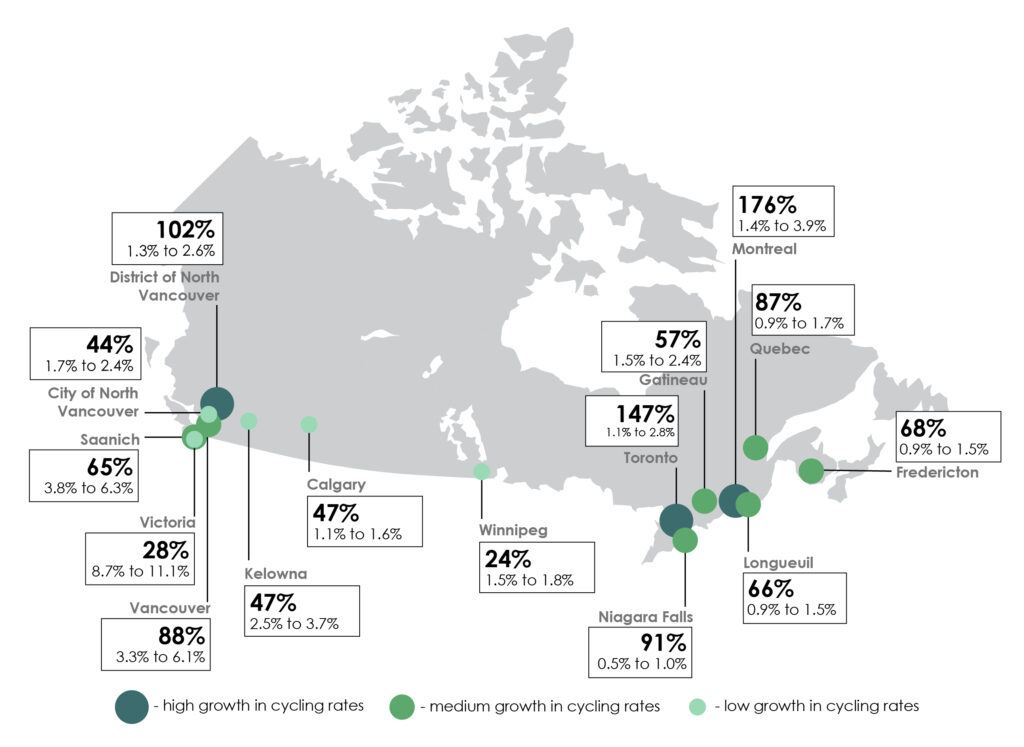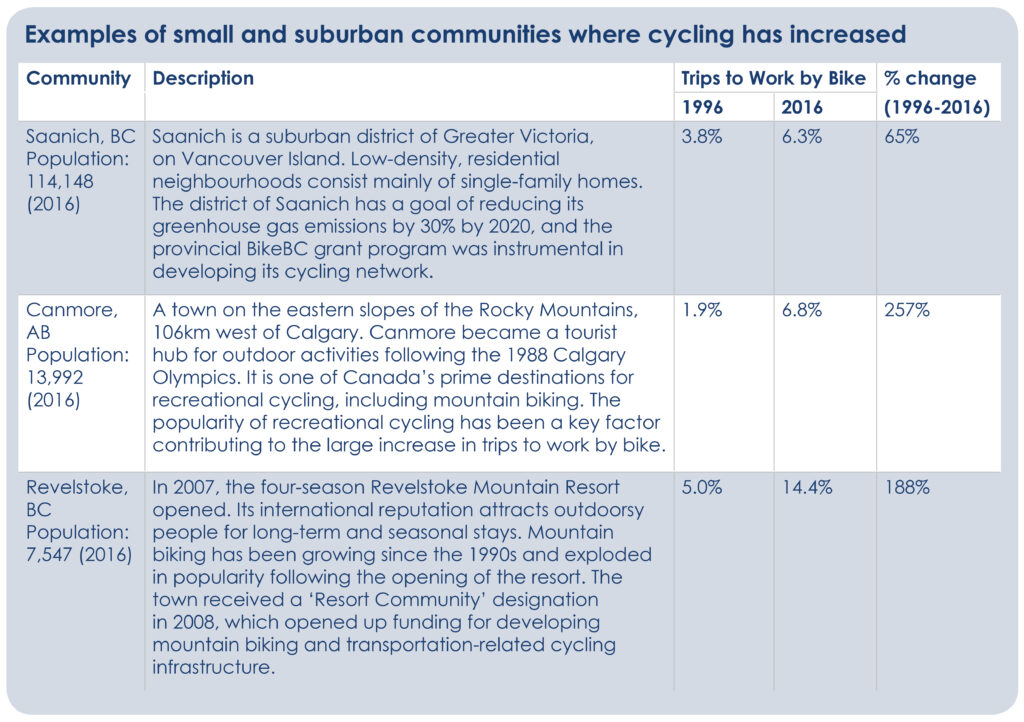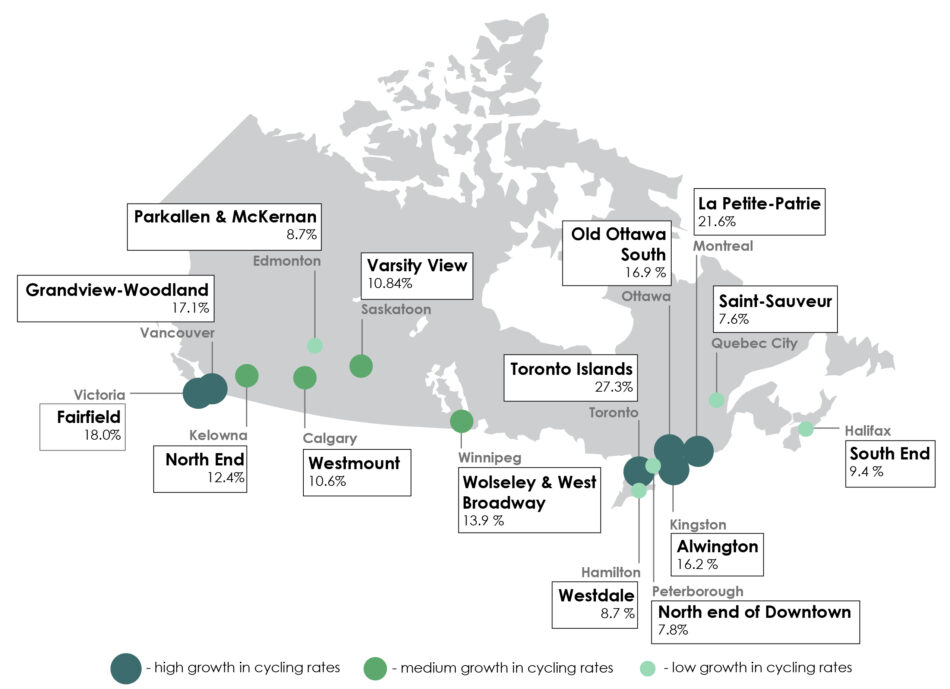Cycling is increasing across Canada in both small and large communities. Forty-two of Canada’s 100 census subdivisions with populations over 50,000 saw rates of cycling to work increase between 1996 and 2016. Widespread growth occurred in British Columbia, where six of the top fifteen communities for cycling increase can be found (see figure below). The highest growth, however, was in Montréal. There, rates of cycling to work nearly tripled, from 1.3% in 1996 to 3.6% in 2016. Toronto’s growth was nearly as high, with an increase of 146%, from 1.1% to 2.7%.
Cycling Increase in Canada, 1996 – 2016
 Highest Growth in Cycling to Work, 1996 to 2016, in census subdivisions (2016 boundaries) with
Highest Growth in Cycling to Work, 1996 to 2016, in census subdivisions (2016 boundaries) with
populations over 50,000, and an absolute change in cycling mode share of at least 0.3%
(Statistics Canada, 1996 and 2016)
Cycling in Small and Suburban Communities
Although cycling rates are lower in suburban areas, these communities still show great promise. In the Greater Toronto and Hamilton Area, for example, one third of all trips, or 4.3 million trips a day, are 5 km or less, a distance that can be easily made by bicycle. Saanich, BC is an example of a suburban community where a strong municipal vision for a greener city, coupled with a provincial grants program and growing interest in healthy, active lifestyles has led to a significant increase in cycling of 14% between 1996 and 2011.
In small towns, tourism often plays an important role in growing cycling for transportation, as is the case with both Canmore and Revelstoke, Alberta. In both places, a recreational mountain-biking culture has translated into more trips to work by bike.

(Adapted from Assuncao-Denis & Tomalty, 2019)
Cycling on the Neighbourhood Scale
Within larger municipalities, levels of cycling vary widely, with some neighbourhoods boasting cycling rates that are many times higher than the municipality overall. The top neighbourhoods (or census tracts) for cycling to work are spread across the country. In 2016, the Toronto Islands, a unique, car-free community located across the harbour from Toronto’s downtown, had the highest rate of cycling to work in Canada, at 27.3%. Other neighbourhoods with very high rates of cycling in 2016 include Montréal’s La Petite-Patrie (22.6%), Victoria’s Fairfield (18%), Vancouver’s Grandview-Woodland (17.1%), and Old Ottawa South (16.9%).
Highest Cycling Neighbourhoods in Canada, 2016

Census tracts with the highest rates of cycling to work in Canada, 2016 (Statistics Canada, 2016)






